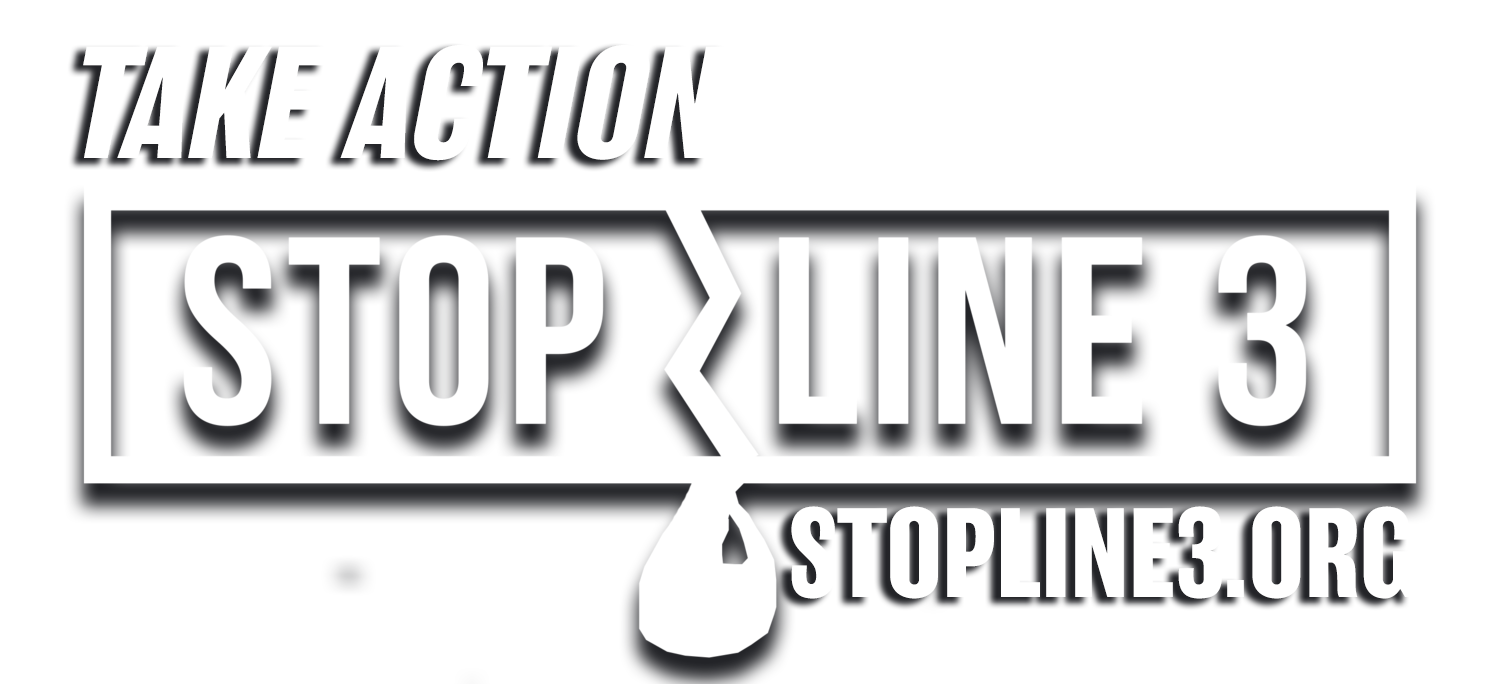Water protectors surround construction equipment used to drill a path for the Enbridge Line 3 oil pipeline near Haypoint, Minnesota, Jan. 9, 2021. (© Keri Pickett)
Stopping the last tar sands pipeline will take all of us.
In 'occupied' Palisade, Minnesota, Water Protectors confront a dying, but still deadly, energy behemoth
Jan 15, 2021
by Winona LaDuke, The Nation Action
Editor's note: This story originally appeared at The Nation and is republished here as part of Covering Climate Now, a global journalism collaboration strengthening coverage of the climate story.
PALISADE, MINNESOTA — In normal times, about 100 souls live in this small Northern Minnesota town on the banks of the Mississippi River where we are making our stand against one of the largest tar sands pipeline projects in North America. Known as Line 3, it has the potential to carry 915,000 barrels a day of dirty oil over 1,000 miles, from Alberta in Canada to Superior, Wisconsin. Palisade is the kind of place where most people know one another a couple of generations back, a town with a tiny main street and just one café. Now there are about 400 workers here — most from out of state — rolling heavy trucks and equipment down icy, windy unfamiliar roads every day.
This small town is nestled in the deep woods and muskegs of Aitkin County, the lands of the Chippewa of the Mississippi, as my people are known. Akiing, the Anishinaabe word for "the land to which the people belong," is half land and half water. Waters deep and shallow filled with wild rice, sturgeon and muskies, and all the mysteries of the deep waters. This is the only place in the world where wild rice grows. Each year in succession the manoomin returns, the only grain native to North America. This is the homeland of the Anishinaabe.
And here Enbridge, the largest pipeline company in the world, is hell-bent on jamming through their Line 3 Pipeline, the company's most massive project, under the cover of this COVID-19 winter as fast as they can—before we can stop them and before the world takes notice.
From the Water Protector Center at the edge of the pipeline route, Water Protectors gather. We hear the pounding all day long. The constant roar of heavy machinery as it rips through the forest and the wetlands. It's brutal work, and dangerous as hell. Last month, Jorge Lopez Villafuerte was killed in the Enbridge Pipeyard, run over by a forklift. He came here from Utah for work. Instead, he found death. Enbridge halted work in the area for less than four hours — and then the pounding began again.
Then there's the armed forces, the sheriff's office, and the Minnesota Department of Natural Resources (DNR) who have deployed here. Their wages are paid by Enbridge. That's because Minnesota noted the $38 million bill for Standing Rock, and decided just to pay in advance. A Canadian corporation paying for the police in Minnesota.
Minnesota needs real infrastructure: water, sewer and bridges. But we're getting a climate bomb pipeline instead.
It looks like an occupation. It feels like an occupation. With all the violence that entails.
Indigenous water protectors protest construction of the Enbridge Line 3 pipeline near Palisade, Minnesota, Jan. 9, 2021. (© Keri Pickett)



